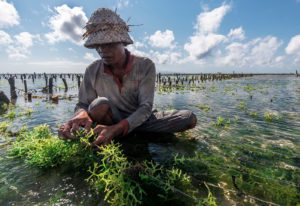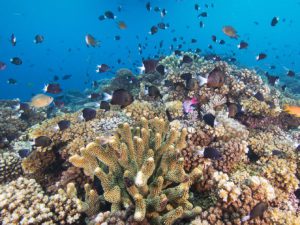Our Shared Seas checked in with Dr. Emily Darling, a coral reef ecologist by training and conservation scientist at the Wildlife Conservation Society, to explore advances in coral reef innovations. In this interview, Dr. Darling reflects on how tropical coral reefs are changing, and why these ecosystems—and the communities dependent upon them—must be central to any climate change strategy.
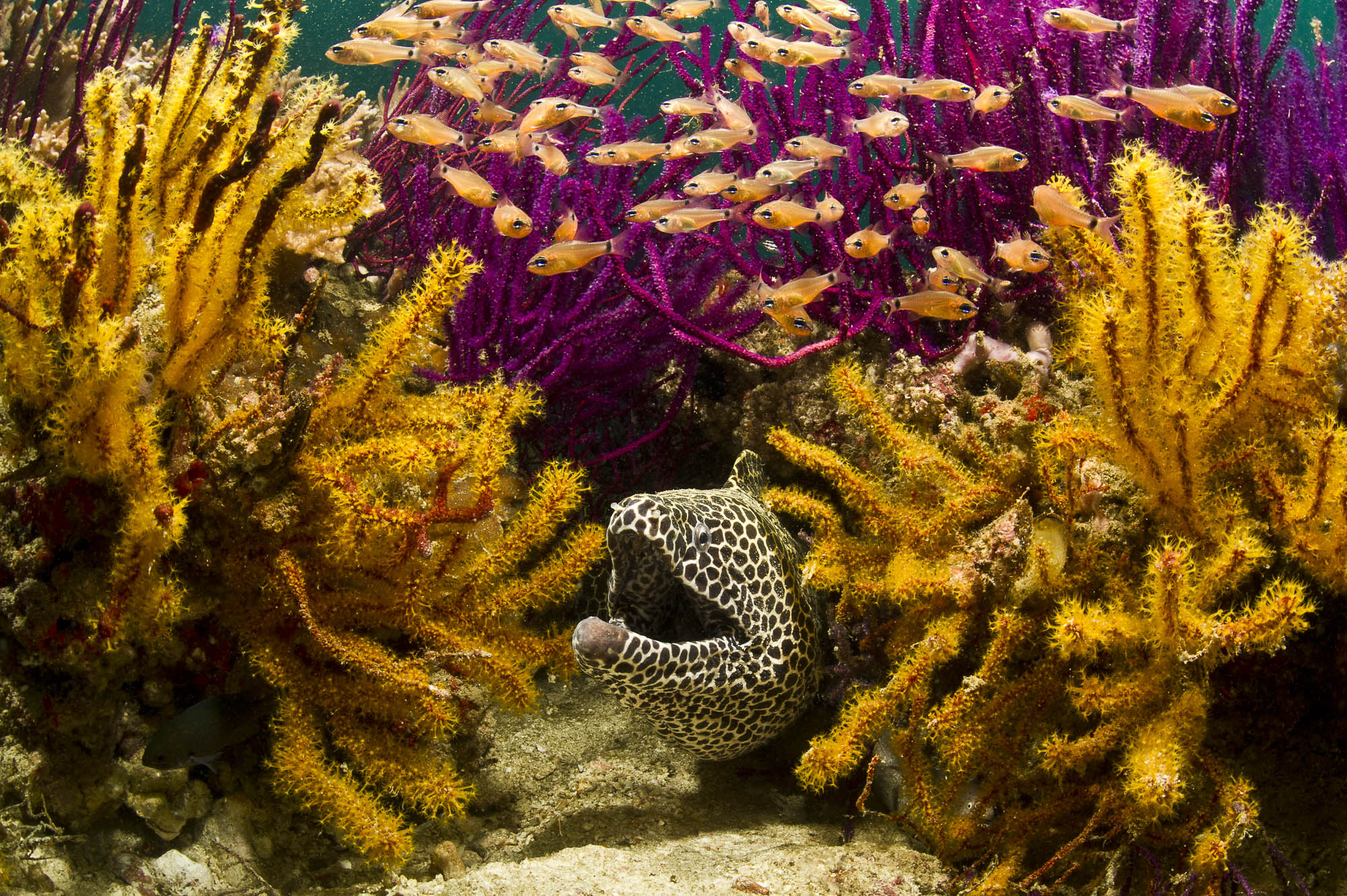
Photo: Warren Baverstock / Ocean Image Bank
As the world’s most diverse marine ecosystem, coral reefs support one-quarter of all marine species and provide billions of dollars in economic value annually through coastal protection, food, livelihoods, tourism, and pharmaceuticals. Coral reefs are among the most vulnerable ecosystems to the impacts of climate change as the ocean warms at an unprecedented rate. Without action to drastically reduce emissions, science suggests that future global warming of even 1.5 degrees Celsius could be dire for coral reef survival.
What is the emerging discourse around the fate of corals in the coming decades? Do you think we may see the disappearance of corals within our lifetime, as some projections seem to suggest?
The pressures and projections of climate change to coral reefs are deeply frightening: bleaching, acidification, loss of oxygen, sea level rise, and storms threaten the survival and resilience of coral reefs, against a backdrop of local pressures from overfishing, pollution, and industrial development.
Corals will not disappear, but they will fundamentally shift to lower diversity, weedier, fragmented, and less intact ecosystems without urgent actions. A key discovery for coral reef conservation is climate refuges, or ‘cool spots’ in oceans, where coral reefs have the best chance to survive. Found next to deep channels, upwelling, or mixing currents, cool spots essentially create conditions that can prevent severe bleaching. Inside these refuges and with effective local management, there are healthy populations of corals and diverse communities of reef fishes. Understanding the pre-conditions for climate refuges—where they are located and how they are connected—can help local conservation efforts focus on protecting and sustainably managing climate refuges as a critical blueprint for coral reef biodiversity.
As to whether it is worth trying to save coral reefs, the short answer is, a resounding yes.
Corals will not disappear, but they will fundamentally shift to lower diversity, weedier, fragmented, and less intact ecosystems without urgent actions. A key discovery for coral reef conservation is climate refuges, or ‘cool spots’ in oceans, where coral reefs have the best chance to survive.
We know that corals will require a portfolio of interventions and there is no one “silver bullet” to enable their survival. In your team’s work around the world, how do you decide which interventions to apply in a given geography? Are we seeing patterns in terms of local conditions for which certain interventions are more applicable than others?
At Wildlife Conservation Society (WCS), we work closely with local communities, partners, and governments to identify the top threats facing coral reefs in certain areas and match the appropriate interventions for tackling those threats. To help guide this, we produced a global series of threat report cards for a global portfolio of climate refuges called the 50 Reefs. These reports cards identify the top pressures facing each reef, which could be overfishing, water pollution, tourism, and/or coastal or industrial development.
Knowing these top threats helps us prioritize interventions in a given geography. For example, in Kenya and Madagascar, we are working with local communities to strengthen the management of MPAs or co-managed small-scale fisheries to reduce pressure from fishing. In Fiji and the Solomon Islands, we are working to protect and restore coastal forests to improve water quality, given that water pollution from land-based activities like agriculture and logging are the top threat. With limited resources and multiple pressures, our approach is to work with local stakeholders to identify the top threats facing reefs in a specific geography, and then identify appropriate and effective conservation interventions to reduce those pressures.
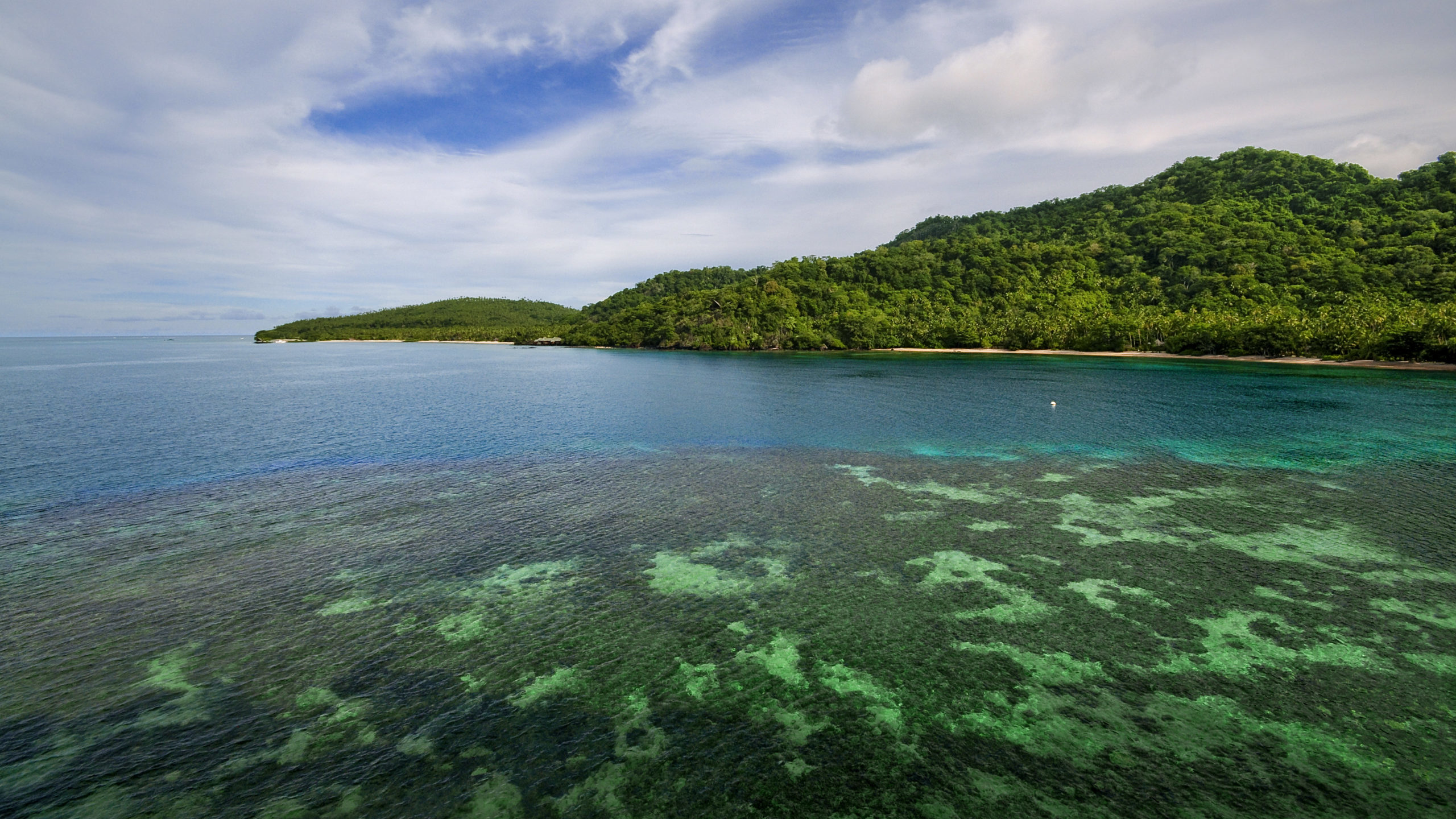
Fiji. Photo: Katerina Katopis / Ocean Image Bank
There have been a handful of portfolio prioritization exercises aimed at identifying reefs with the highest likelihood of surviving climate change, one of which resulted in seminal 2018 paper. Can you describe some of the science of how these target reefs and countries were selected and what your team hopes to accomplish in the coming years?
With the accelerating consequences of climate change for coral reefs, portfolio prioritizations have asked, “Where are coral reefs most likely to survive climate change?” For the 50 Reefs analysis, we integrated past, present, and future temperature change, cyclones, and reef connectivity. We then used a portfolio approach to select a representative global network of priority reefs. Other prioritizations have used different variables in their modelling, such as the years before annual onset of severe bleaching or characterizing environmental stress from multiple variables, such as temperature, light, wind, and waves.
These different models are an important part of the rigorous science of climate refuges because they model the future in different ways. Right now, we are at a point where we can test these models with the actual observed health of coral reefs from underwater surveys. For example, WCS and WWF have developed MERMAID, the first global data platform for coral reef monitoring surveys. Over the next few years, we plan to compare these different models and test how they are actually predicting the ecological status of coral reefs. This will help us refine future models and improve our predictions of coral reef survival into the coming decades.
Beyond their ecological value, coral reefs provide substantial value to communities for food security, storm protection, livelihoods, cultural value, and more. Can you discuss some of the basic principles and best practices for integrating social considerations in coral reef interventions?
Social considerations are absolutely crucial for conservation to be ethical, effective, and enduring. At WCS, our approach is to partner with local communities, local champions, local governments, and local organizations and work together over the long term. Local communities have governed and managed coral reefs for thousands of years, and hold critical knowledge, worldviews, and considerations that must be co-designed into any conservation and management intervention. The best strategies are to listen, learn, and co-create projects with local partners.
For example, in Fiji, as part of the Vibrant Oceans Initiative, the Wildlife Conservation Society is working with 29 communities to develop watershed management plans that will both benefit human health by reducing human disease from untreated wastewater, and improve water quality by reducing disease and macroalgae on coastal reefs. Each of these partnerships are collecting information on agricultural, aquaculture, fishery and recreational activities, sanitation, local behaviors, community governance, and local water quality and microbiology. Engaging local partners at every stage—from design to implementation—in monitoring and adaptive management is a key to achieving joint outcomes for biodiversity conservation, human well-being, and sustainability.
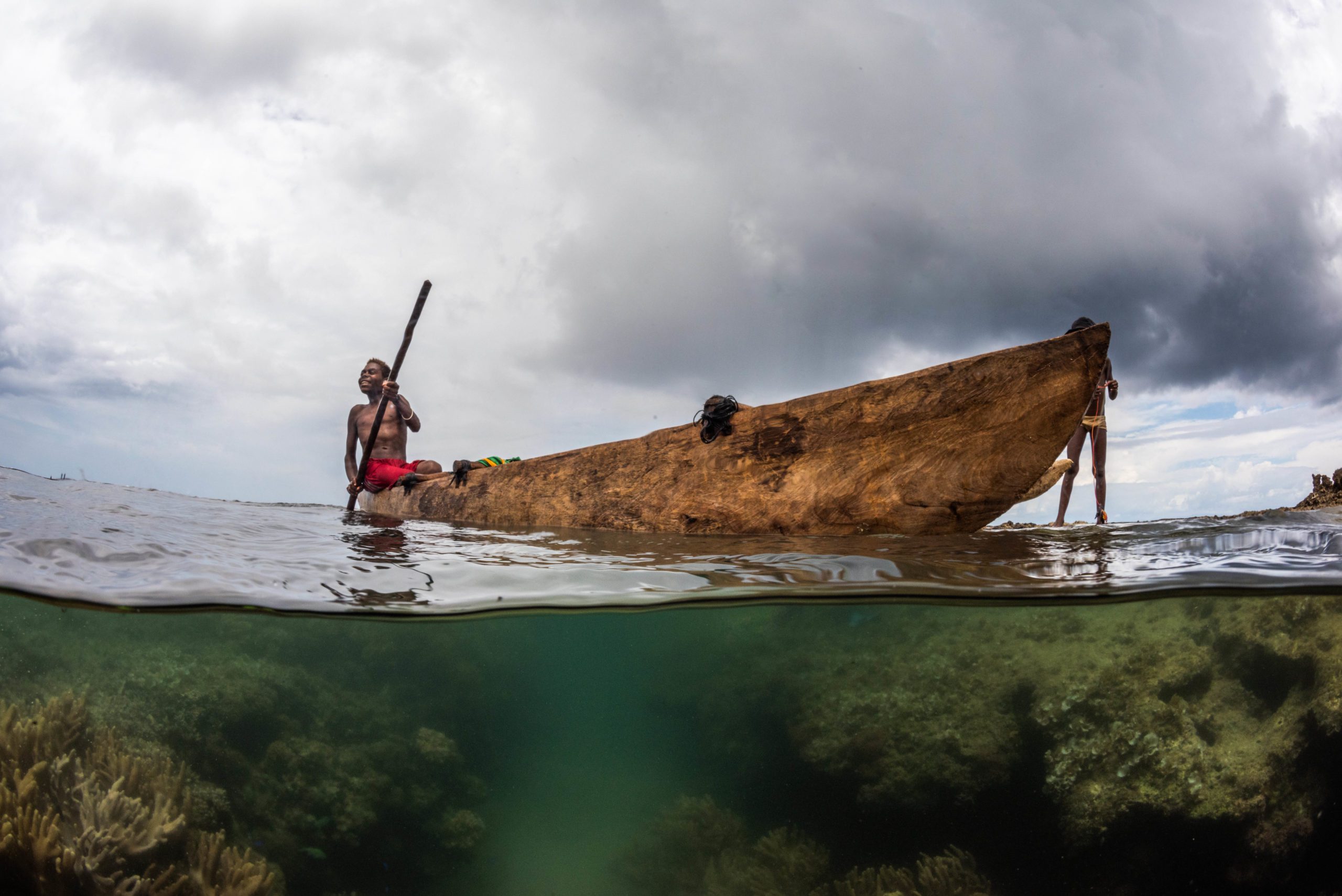
Fishing in Fiji. Photo: Tom Vierus / Ocean Image Bank
In addition, we partner with environmental social scientists who are trained to work with communities on co-creating local knowledge in governance, well-being, and sustainability. This ensures our technical work and conservation practice is grounded in the leading science. For example, some of our emerging work with social scientists is focused on equity and ensuring that the impacts of conservation are fairly distributed.
We are asking questions such as whether women are able to participate in decisions that affect where and how they can fish? Are different groups within a community able to contribute to decision making around the local rules of management? One of my favorite roles at WCS is being able to bring together global scale scientific information about coral reefs with natural and social scientists, conservation practitioners, and policy experts to identify practical and actionable solutions for coral reef conservation.
Local communities have governed and managed coral reefs for thousands of years, and hold critical knowledge, worldviews, and considerations that must be co-designed into any conservation and management intervention. The best strategies are to listen, learn, and co-create projects with local partners.
In the case of coral reefs, we know that time is of the essence to slow and reverse their decline. What are your recommendations for advancing best practices for pathways to success in this work?
Reversing the decline of coral reefs requires global partnerships. First, we must decarbonize our economy as a fundamental requirement to save coral reefs. Second, we must scale up local conservation and management actions that can maintain the biodiversity and resilience of coral reefs. My recommendation on building these type of global partnerships is to be as inclusive as possible: bring together diverse groups, center solutions in the knowledge and values of people living close to coral reefs, meet people where they are, and find win-wins for people and nature.
Measuring success is also crucial to this work. We must show that coral reef conservation benefits people’s livelihoods, culture, and food security alongside biodiversity—and what that return on investment looks like. Then it becomes a matter of delivering outcomes as opposed to a conversation about whether it is worth investing in coral reefs in the first place. Coral reefs are a key component of any strategy to fight climate change. These are the ecosystems on the frontlines of massive global change, right now. If we show the world that we can save coral reefs, then we can save our planet.
Coral reefs are a key component of any strategy to fight climate change. These are the ecosystems on the frontlines of massive global change, right now. If we show the world that we can save coral reefs, then we can save our planet.


